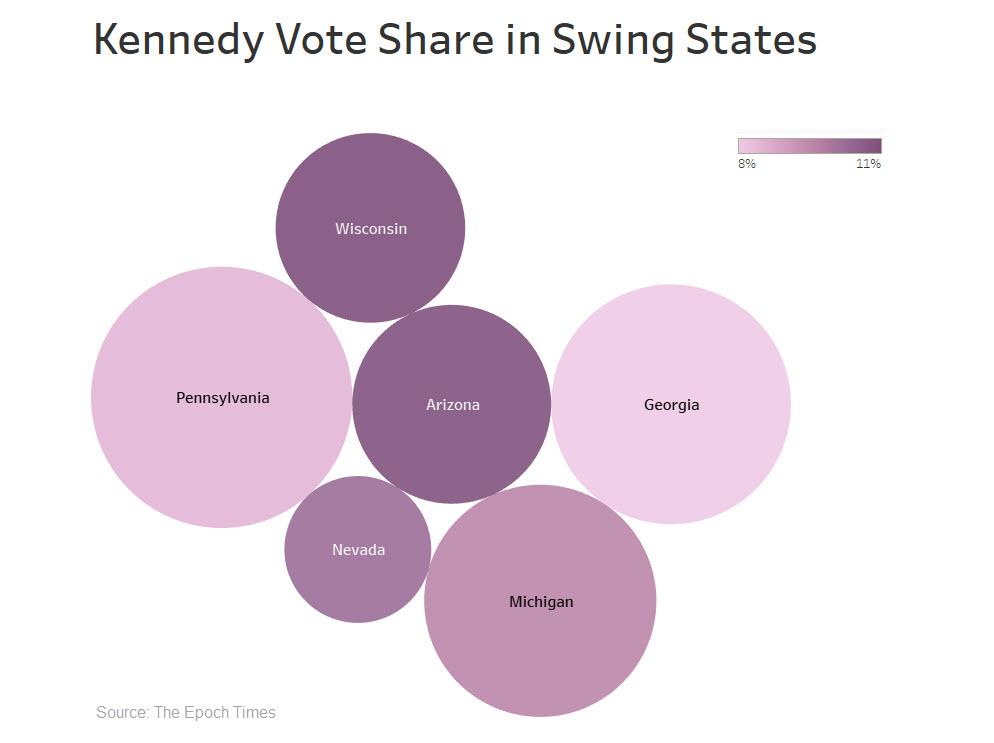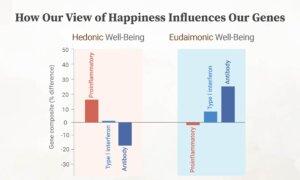Hidden voters, third-party candidates, and turnout figures compound uncertainty over the outcome.
News Analysis
Former President Donald Trump is trending up in the election.
For pollsters, putting together a statistical sample that represents the electorate is a perennial challenge. Using polls to attempt to predict the outcome of an election is an even bigger hurdle to clear. Here are some factors that polls may not be telling us about the 2024 election.
Trump’s ‘Hidden Voters’ Become More Vocal
Trump’s “hidden voters” are getting more vocal in polls, according to Robert Cahaly, Trafalgar Group’s head pollster, who had the most accurate results predicting a Trump victory in 2016.
“The hidden Trump vote has always been there, and there’s a certain segment of Trump people who just won’t say they’re for Trump,” Mr. Cahaly told The Epoch Times, adding that while the share varies by state, “you’ve probably got three to five percent of Trump people kind of under the radar.”
This year, however, that share is “a little smaller,” and part of the hidden Trump votes is no longer silent and is reflected in the polls, contributing to President Trump’s lead, Mr. Cahaly said. As a result, President Trump’s outperformance over polls may be smaller this time than in 2016 and 2020.
A Small Lead Doesn’t Always Translate to Election Victory
The accuracy of polls came under question during the 2016 and 2020 presidential elections. In investigating why past cycle polls overstated voters’ support of Democratic candidates, the Pew Research Center listed less Republican representation in survey samples and the higher likelihood of pro-Trump voters not completing polls.
Prof. David Taylor, director of the Institute for Policy & Opinion Research at Virginia’s Roanoke College, said that a bigger problem was predicting the winner of a state’s electoral votes based on a one—or two-percent lead, which was essentially a tie given the usual margin of error. Consequently, a series of such predictions for swing states could lead to drastically different outcomes.
To Mr. Taylor, anything below a four percent lead is actually “leaning.” Given a typical plus/minus four percent margin of error, four percent may mean zero or eight percent. A one percent lead may be a five percent lead or a three percent lag.
Therefore, looking at poll numbers as a range or a band is essential.
“I’ll pick up on something where 10 points plus stands out to me as likely real,” he told The Epoch Times. “Anything else is temporary, and I’m watching change over time.”
He cautioned voters from relying too much on single polls; usually, averaging a group of polls will help get a more accurate picture of a snapshot of the race at a given time.
“If it looks really close, don’t think your candidate is going to win,” he added.
Polls Don’t Predict Turnout
Factors outside of what can be polled are also at play for the actual election outcome.
One such factor is voter turnout.
Mr. Cahaly observes that people who turn out to vote often belong to a different data subset than those surveyed in polls.
“The Democrats are very good at getting people who really don’t care about voting to turn out to vote,” he said. “It’s pretty hard to poll somebody who never thought about voting, isn’t planning on voting, and ends up casting a vote.”
On the other hand, according to Mr. Taylor, polls may lower turnout when voters believe their candidate is winning with or without their votes.
Are there polls out there aiming to impact voter behaviors? Mr. Cahaly said such surveys might surface a few weeks before the election.
It is difficult to discern such public relations attempts from polls that are supposed to just take the pulse of voters, he said. However, one could look for pollsters’ ratings at Real Clear Politics, where companies that poll during the last few weeks of an election cycle are ranked based on past performances.
Third-Party Candidates
On average, independent presidential candidate Robert F. Kennedy, Jr. commands 10 percent of registered or likely voters in swing states.
“Third-party candidates are definitely going to affect this [race], and we may have a larger number of third-party candidates that actually get votes than we’ve had probably in recent memory,” Mr. Cahaly said.

In the future, the head pollster said he would closely monitor the candidate’s makeup on the presidential ballots in each competitive state.
As of early April, Mr. Kennedy is only officially on the ballot in Utah. According to his campaign, the team has collected enough signatures for Hawaii, Idaho, Nevada, New Hampshire, and North Carolina, and is working on qualifying in other states.
Mr. Cahaly believes that Mr. Kennedy has the resources to get on the ballot in most states.
The Story of America
Mr. Cahaly attributes President Trump’s lead in swing states to the messaging of his border policy and that fewer union workers are inclined to support President Biden due to the current administration’s green policies that impact traditional manufacturing jobs.
Some believe that the incumbent candidate needs to sharpen his messaging.
Mr. Klain, in comments reported by Politico, complained that the president spent too much time “talking about bridges” as Americans grapple with rising costs. He urged his former boss to highlight the vision outlined in his State of the Union address.
“The economic message of that speech was very strong and should be the economic message overall, which is less about just logging the accomplishments, and more about an agenda and choice. And I think when they frame it that way, it’s very powerful,” Mr. Klain said.
Original News Source Link – Epoch Times
Running For Office? Conservative Campaign Consulting – Election Day Strategies!


